If you work in the packaging or shipping industry, you probably work with cardboard boxes daily. Corrugated cardboard boxes are one of the core products used to package and ship products of all types around the world, so they are an integral component in several businesses and industries.
While you may use them on a regular basis, you probably have never given much thought to where corrugated boxes come from or how they are manufactured. It is easy to forget that the boxes you depend on were once trees growing in forests spanning the globe. The process for transforming a tree into corrugated cardboard is actually quite fascinating, and it is more high-tech than you may realize.
How exactly is the humble corrugated box made? We’re glad you asked!
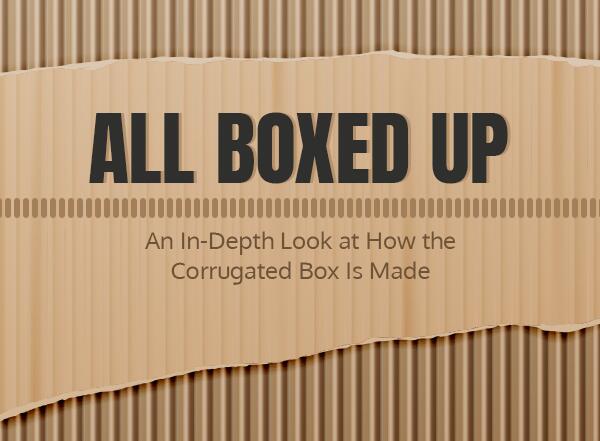
Corrugated cardboard is an extremely versatile material that is used to protect, display and ship virtually all types of products. It is made using three layers of strong paper known as craft paper, which makes it strong, stiff and lightweight.
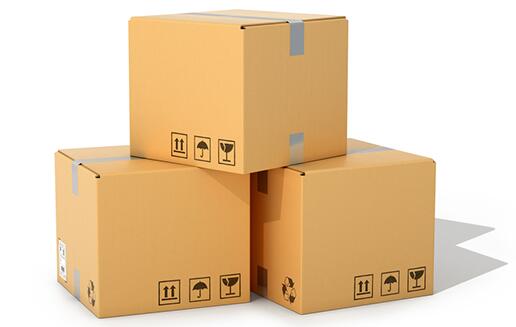
Corrugated cardboard boxes come in a wide range of sizes, designs, strengths and shapes. They all share the same basic features, though. They are basically made up of a paper flute (more on that later) sandwiched in between two layers of kraft paper liners. The liners often contain a large percentage of recycled material, resulting in more eco-friendly packaging.
Corrugated cardboard is made primarily using fast-growing pine trees. Some large companies even own their own forests that span thousands of acres where trees are planted, matured, harvested for packaging and replaced with seedings. Only the trunks of these trees are used in the production of cardboard, so after they have been harvested, all the branches are removed.
The tree trunks are shipped by truck to pulp mills. Some of these mills are independently owned while others are owned by the largest packaging companies. Upon arrival at a mill, the trees go through a machine that removes their bark and chips them.
The chips then go through either a mechanical or a chemical pulping process. During the mechanical pulping process, the chips are ground down to reduce the wood to its individual cellulose fibers. This is typically done by forcing the chips against a revolving stone. Water is sprayed on the stone to remove the fibers, but this process does little to remove a non-fibrous component of wood known as lignin. Because lignin binds fibers together, it can reduce paper quality if it is not removed during the pulping process. However, mechanical pulping costs less than chemical pulping and generates a higher output, so the process is still widely used despite the reduced-quality outcome.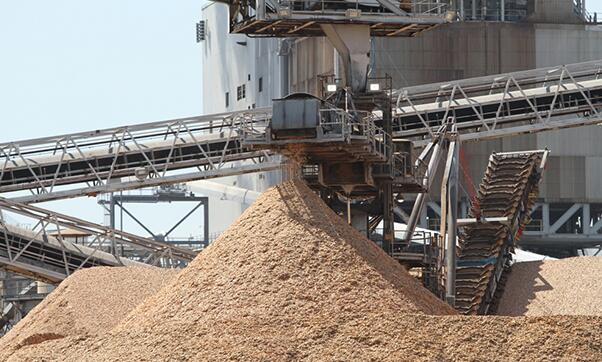
Alkaline solutions are used to digest wood during the sulfate process, and sodium sulfate is added to increase the strength of the pulp. This is where the “kraft” name comes in, as it means “strength” in Swedish.
In some instances, recycled material is used instead of virgin wood. The liners produced using recycled fiber are usually of a lower quality, however, so they are only used as inner liners or as central liners in double-wall cardboard.
The resulting slurry of wood pulp is then pumped to a Fourdrinier machine — also known as a paper-making machine. This machine consists of square structures measuring up to 600 feet long with wire mesh. The paper is initially formed on these screens before being fed into steam-heated rollers with felt blankets that remove the excess water. Once dry, the finished liner is wound onto massive rolls for shipment.
Fluting refers to the middle layer of corrugated cardboard that is configured in a wave-shaped pattern of arches. There are a few different types of fluting. Most recently, B flute board has been replaced by R flute. While the performance of both types is the same, R fluting is thinner, resulting in lower supply chain costs. The thinner size also means it takes up less space while in storage, which is extremely beneficial for companies with limited room for storing materials. Also sometimes referred to as S flute or M flute, R flute improves print quality by as much as 30 percent, makes it possible to fit 30 percent more cases on a pallet and reduces carbon dioxide output from trucks by 30 percent due to its space-saving nature. 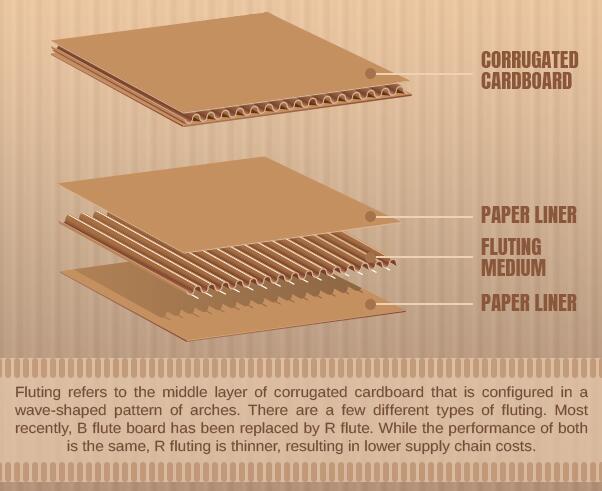
So how is cardboard made? As mentioned earlier, corrugated cardboard is made by sandwiching fluting between two liners. The fluting gives the boxes their strength and helps protect merchandise from damage while in transit. The fluting effect is created by feeding rolls of kraft into a corrugated roller machine to undergo a process that was originally developed in the 18th century to add ruffles to garments like skirts and shirts. The process is known as corrugating.
One roll is loaded into the machine to be corrugated, and a roll of liner is fed in to later be joined with the corrugated medium. A second roll of liner travels over the bridge, which is a flat structure over the corrugating rolls. The liners are adhered to the corrugated medium at a later point in the process.
The corrugating rollers are covered with horizontal, parallel ridges known as flutes. After it passes through preheating rollers, the kraft paper passes between the corrugating rolls, which trap and bend it to create the crinkly fluting. Next, it passes through another set of rollers known as the single-facer glue station. Here, starch-based glue is carefully applied to the edges of the corrugated paper to adhere it to the first layer of liner. It then goes to the double-backer glue station where the other layer is glued in place. Finally, the cardboard travels over plates that are heated by steam to cure the glue.
The result of this process is what you are probably most familiar with: a middle layer of wavy fluting sandwiched between two layers of flat kraft paper.
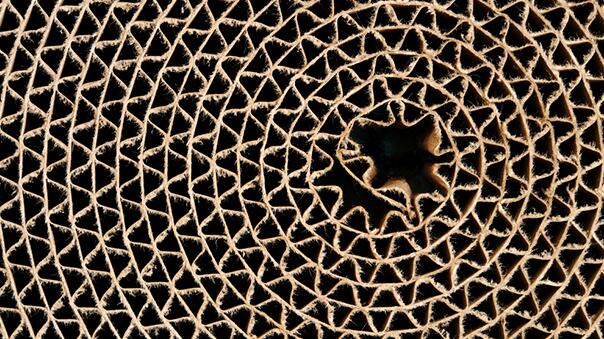
Corrugated cardboard comes out of the machine and is trimmed by a slitter-scorer to form box blanks. The blanks exit the machine and slide onto a stacker that places them on a rolling platform. Next, they are delivered to other machines that turn the flat pieces of cardboard into usable shipping containers.
Known simply as flexos, flexographic machines use dies and die-cutting patterns to process box blanks. Once the dies and patterns have been loaded into the flexo’s rollers, the box blanks are fed into the machine. As the blank travels through the rollers, it is trimmed, scored, cut and printed. It then passes into a printer-folder-gluer where it is folded into its box form and glued together. The finished boxes are stacked automatically then sent to another machine where they are wrapped for shipping.
In some factories, additional equipment is used when making cardboard boxes. Things like stand-alone die-cutters and die-cutters with printing stations along with machines that apply wax coatings to meat, fruit and vegetable containers are widely used, depending on the needs of a particular company or client.
As businesses come under increased scrutiny for their environmental impact, many are looking for ways to implement green initiatives and environmental packaging programs. Paper-based corrugated cardboard boxes are both ethical and sustainable, making them an excellent choice.
Because corrugated packaging is recyclable and can be made using recycled materials, it causes much less environmental harm than plastic-based packaging options. Since it is typically made without the use of bleaches or dyes, disposing of it is also sustainable. The paper pulp used in creating corrugated cardboard comes from fast-growing pine trees or from wood chips and leftover materials from other processes. Suppliers have developed manageable, sustainable forests to ensure that the materials used to produce cardboard packaging are renewable.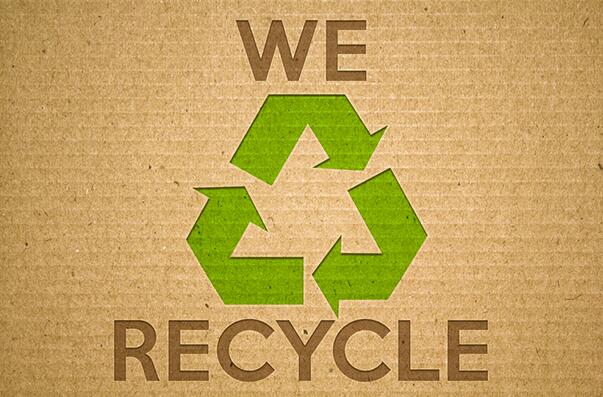
Lastly, most corrugated boxes are reused multiple times before they are thrown away or recycled. They are extremely durable and easily collapsible, making them fully reusable. Customers can use them for storing household items, shipping gifts to friends or loved ones, moving or creating craft projects. The options are virtually limitless, and the more times a box is reused, the more environmentally friendly it becomes.
The humble corrugated box is one of the most frequently used types of packaging — and for good reason. It is an environmentally friendly, ethical and renewable choice, and it is extremely cost effective for business owners. The process for turning trees into corrugated cardboard boxes requires several steps, but it is actually rather straightforward. Manufacturing facilities can produce thousands of custom corrugated boxes daily and deliver them to customers spanning the globe. 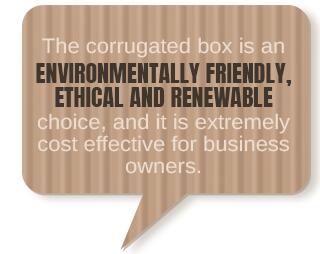
These boxes are also versatile. They come in an endless array of sizes and styles to meet any need. Since they are typically rectangular in share, they can be stacked neatly with ease, enabling shippers to fit more packages on a single pallet or in a vehicle. This enables them to use fewer vehicles to transport packages, resulting in lower fuel consumption and fewer carbon dioxide emissions.
While you have probably never given much thought to corrugated cardboard boxes before, they are actually quite remarkable. They offer exceptional versatility and durability, and it is easy to understand why they are the building blocks of the shipping and packaging industries.
Copyright:@2020-2021
Comments Please sign in or sign up to post.
0
0 of 500 characters used